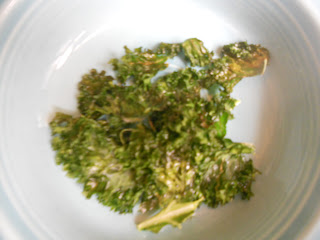I am learning over 100 dietary theories. I am fascinated by the raw food diet and the macrobiotic diet.
Raw Food Diet
The raw food diet consists of consuming unprocessed and uncooked plant foods, such as fresh fruit and vegetables, sprouts, seeds, nuts, grains, beans, nuts, dried fruit, and seaweed. The diet includes foods in their unprocessed and uncooked state and omits most other foods. In general, at least 75% of the foods must be living or raw in this diet.
Most raw foodists include a limited amount of foods that have undergone some processing (cooking), as long as the processing does not involve heating the food over 115 degrees Fahrenheit. Raw foodists believe that heating food above 115 degrees Fahrenheit can destroy enzymes in food that can assist in the digestion and absorption of food. They believe that foods cooked above this temperature lose a significant amount of their nutritional value and are harmful to the body, whereas uncooked foods provide living enzymes and proper nutrition. Benefits of the raw food diet include the beliefs that it prevents degenerative diseases, slows the effects of aging, provides enhanced energy, boosts emotional balance and improves overall health.
There are specific food preparation techniques used to make foods more digestible and add variety to the diet. These include sprouting seeds, grains, and beans, juicing fruits and vegetables, soaking nuts and dried fruit, and dehydrating food.
Some precautions of the raw food diet may include certain nutritional deficiencies such as calcium, vitamin D, vitamin B12, iron, zinc, and calories. Also, raw foods are associated with greater incidence of food borne illnesses, such as food poisoning and gastroenteritis. This diet may not be appropriate for children, pregnant or nursing women, people with anemia, or people at risk for osteoporosis.
The most popular raw food diet is a raw vegan diet, but other forms include raw animal products and/or meat.
The Macrobiotic Diet
According to WebMD, a macrobiotic diet is not simply a diet plan. It is a way of life. If you're drawn to the concept of eating a natural, organic, plant-based diet with some fish and embrace a Zen-like spirituality in both your life and food selections, then a macrobiotic diet may be for you.
Originally from Japan, the principle behind the macrobiotic diet combines tenets of Zen Buddhism with a Western-style vegetarian diet. Much more than a list of recommended foods, it is all about a spiritualism that transcends lifestyle, attitude, and diet practices. The word "macrobiotic" comes from the Greek, "macro" (large) and "bio" (life), and means "long life." The macrobiotic diet regimen supports an Eastern philosophy of balancing foods to attain a balance of yin and yang. To achieve that balance, foods are paired based on their sour, sharp, salty, sweet, or bitter characteristics.
Yin foods are cold, sweet, and passive while yang foods are hot, salty, and aggressive. Some foods are prohibited because they contain toxins or fall on the far end of the spectrum, making it difficult to achieve and respect a Zen-like balance.
The Macrobiotic Diet is based on whole grains; vegetables and legumes are a side component, and animal products are used in small quantities. Locally grown, whole grains, legumes, vegetables, seaweed, fermented soy products, fruit, fish, nuts and seeds are the main sources of this diet. A diet breakdown would consist of: 50-60% carbohydrates, 20-25% vegetables and seaweed, 5-10% legumes, 5-20% fish/nuts/seeds/fruit/miso, with 1-2 cups of soup daily made from ingredients listed above. The Macrobiotic Diet is a type of low fat, high fiber diet, with little processed food. Vitamin and mineral supplements are not encouraged.
Foods that are considered nightshade vegetables, such as tomatoes, peppers and eggplant, are not advised. Spinach, beets and avocados are considered highly yin, and should be used sparingly.
Types of yin foods include: sugar, alcohol, coffee, chocolate, refined flour, hot spices, drugs, chemicals, preservatives, commercial milk products, and poor quality vegetable oils.
Types of yang foods include: poultry, meat, eggs and refined salt.
Balancing foods include: whole grains, vegetables, beans, sea vegetables, fruits, nuts and seeds. Macrobiotics is all about balance.
Cooking with the seasons and climate are also important in a Macrobiotic Diet. Spring and summer foods should be lighter, cooked less, and contain more raw foods than those consumed during the winter season. Age, activity level, sex and other health factors should also be taken into consideration when devising a meal plan.
George Ohsawa was the founder of the Macrobiotic diet and has written several books on the topic.
References:http://en.wikipedia.org/wiki/Macrobiotic_diet
http://www.webmd.com/diet/features/macrobiotic-diet







